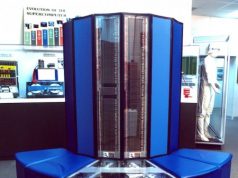New York World’s Fair, 1939
If you are anything like the people at MESH Cities you spend far too much time thinking about the future of cities. And like us many of the urban forms you’ve probably dreamed up make better film set backdrops than they do practical places to live. Why is it that designers tend to produce either utopic or dystopic (or just plain bad) visions of future cities?

Blade Runner (Ridley Scott, 1982—He also did the dystopic Apple 1984 commercial)
The answer is simple; cities are so complex that they are beyond the ability of one person, or any purpose-built team, to understand let alone design. Ask Jane Jacobs or Le Corbusier. The only option we are left with as designers is to make caricatures of what might be. The results are mostly wrong.
Until now.
MESH Cities wants to be one of the first sources to tell the architecture and urban design industry the good news. Efficient, livable cities of the future can be designed today. Here is the bad news for those professionals. Everyone alive on the planet today possesses the innate ability to do the same. It is in their DNA.
Let us explain how this works.
First, as urban theorists who believe emergent systems hold the key to solving the big problems facing humankind, we probably have a different view of what design is than most practitioners. In many ways that is because we made a point of following the Fulleresque idea that educated generalists not specialists are better positioned to respond to the increasing systemic changes driving modern economies and social systems.
One of those systemic changes is the increased migration of the human population from farms to cities. Never before have more than 50% of all the people alive lived in urban environments. That massive migration is generating remarkable insights into the universal truths underpinning emergent systems. This, surprisingly, includes profound relationships between cities and the human brain.
Read Part Two tomorrow.







